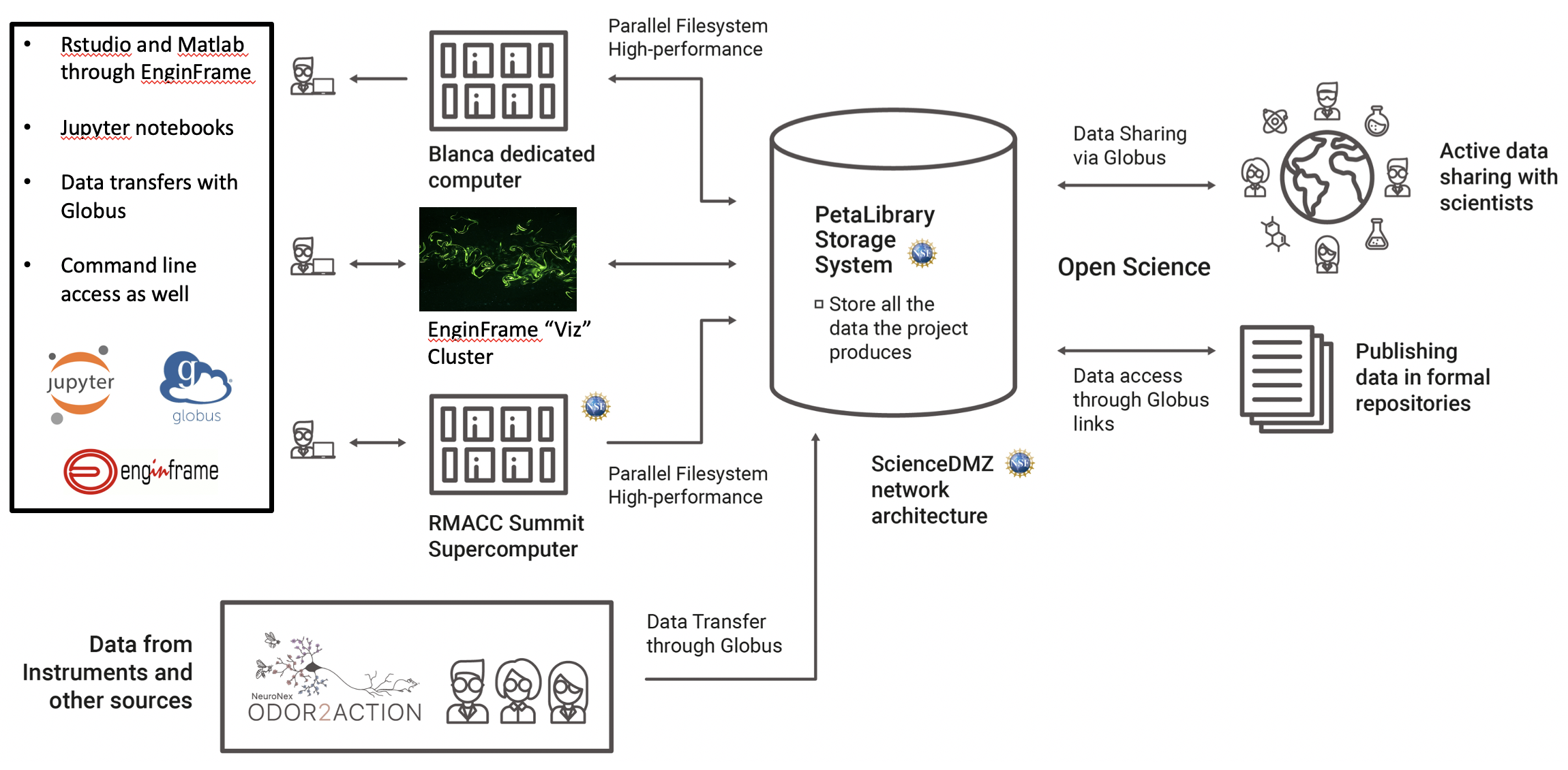CURC documentation for Odor2Action users
Welcome to the CU Boulder Research Computing (CURC) documentation for users affiliated with the Odor2Action project. CURC provides high performance computing and storage for Odor2Action.
The objective of this documentation is to help you get started using CURC resources. Each user has unique needs; therefore, in addition to using this documentation we strongly encourage you to contact rc-help@colorado.edu to request a one-on-one Zoom consulation. Consultations are an efficient way to quickly spin-up on the use of CURC resources. We want you to have a great experience!
The following schematic may be useful for visualizing CURC resources:

Resources: The following computing and storage resources are available to O2A users:
The dedicated O2A compute node on the Blanca condo cluster (most computing tasks)
Shared computing nodes on the RMACC Summit supercomputer or the Alpine supercomputer (very big computing tasks)
The CURC visualization cluster via EnginFrame (A 3d-accelerated remote deskotp environment on GPU nodes for visualizing images & using software requiring a graphical user interface, or “GUI”)
The CURC PetaLibrary (storage of O2A datasets)
The CUmulus on-premise cloud system (spin up your own virtual machine)
Gateways: The computing and storage resources can be accessed through the following gateways:
Via the command line (Access to Blanca or Summit for batch computing, or PetaLibrary for data transfer)
Via the CURC JupyterHub (Access to Blanca or Summit to run iPython notebooks)
Via CURC EnginFrame (Access to the visualization cluster)
Via Globus (transfer files to/from PetaLibrary or other CURC filesystems)
Via CUmulus web portal (Access to the CUmulus cloud system)
Via CURC Open OnDemand (Currently in _beta_: access to most services via desktop)
See the Quick Start Guide to get a CURC account and request access to resources.
- QUICK START GUIDE
- USING CURC RESOURCES
- Globus (upload/download data)
- JupyterHub (python notebooks)
- EnginFrame (visualization, GUIs)
- O2A Blanca compute node (command line, batch computing)
- HOW DO I?…
- GLOSSARY
- GETTING HELP